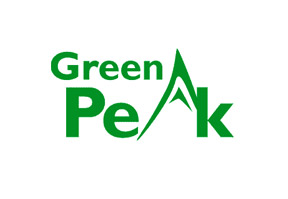GreenPeak Technologiesh has launched the new GP565 Smart Home radio chip for remote controls, that supports voice control, motion sensing and the new ZRC 2.0 protocol. Next generation remotes use RF instead of infrared (IR) and reportedly will be able to control all the home’s Smart Home features – all from a single remote.
“Even with a growing move to the cloud to manage everything, there will always be a need for remote controls. Sometimes you want to use your smart phone for talking, texting and playing games – not controlling your TV or your environment,” explains Cees Links, founder & CEO of GreenPeak Technologies. “When you go out for the evening, you are not going leave your smart phone at home for your family to switch channels! In addition, makers of TV sets and set-top boxes will always provide a dedicated remote control that they know will work with their system without having to rely on the end user to download an app or to configure their network.”
The new ZigBee ZRC 2.0 protocol enables a single remote control to control all the home’s connected devices – including turning on lights, opening curtains, managing appliances and environment, etc.
Other new ZRC 2.0 features include the ‘Find My Remote’ feature, which enables a remote control to start beeping and/or flashing when it is lost and making it much easier to find. It can be activated by a physical Find My Remote button on the home’s entertainment system or Smart Home devices.
The ‘IR-RF Download’ feature provides complete control of legacy audio and video equipment, either through RF4CE or infrared, with a hybrid remote control, without requiring the user to select the correct IR settings for the TV. ZRC 2.0 is fully backward compatible with existing ZRC 1.x implementations.
The new voice control features enables users to control the remote without having to navigate a confusing nest of buttons. This includes changing channels, searching for programs, activating DVR and other functions, as well as controlling other ZRC 2.0 connected devices in the home. GreenPeak uses a reliable compression codec to enhance throughput within the available ZigBee data rate and advanced voice recognition, which greatly improves the user experience.
Motion sensing can enable these same kinds of management features by how the end user gestures with the remote. For example, tilt the remote down to lower volume and tilt it up to increase volume or twist sideways to change channels. It is intuitive and convenient and simplifies navigation.
The new GreenPeak GP565 is optimised for advanced yet low cost ZigBee RF4CE remote controls. It is available in two versions with 120k or 248k Flash (and 8k or 16k RAM) memory. The 40-pin footprint can support a keyboard scanner interface or other IO interfaces required for remote control implementations. Also the new GP565 silicon provides reduced current consumption in combination with improved receiver sensitivity and output power. GreenPeak patented Antenna Diversity technology enables superior range and WiFi/Bluetooth interference rejection.
GreenPeak provides reference designs for remote controls, motion sensors, smart plugs, door and window sensors, and other Smart Home sensor devices. They will help guide device manufacturers to quickly design and build low cost, low power sensor nodes, optimised for battery and battery-free operations. Samples of the new silicon are available today and volume shipments are expected in Q1 2015.










